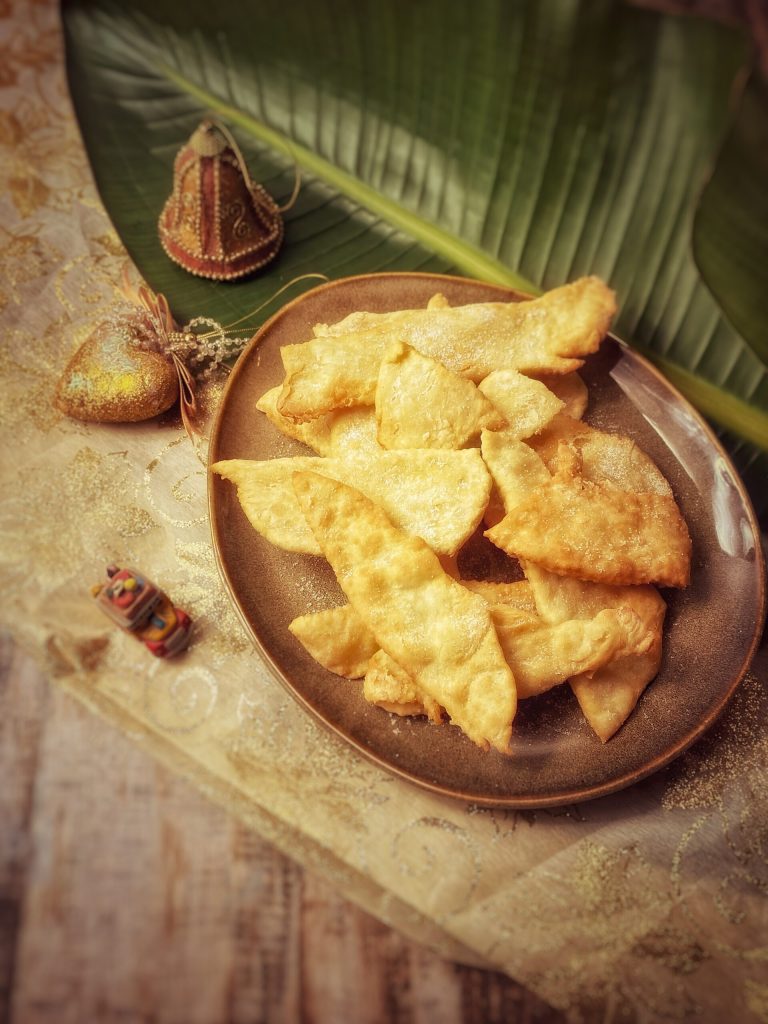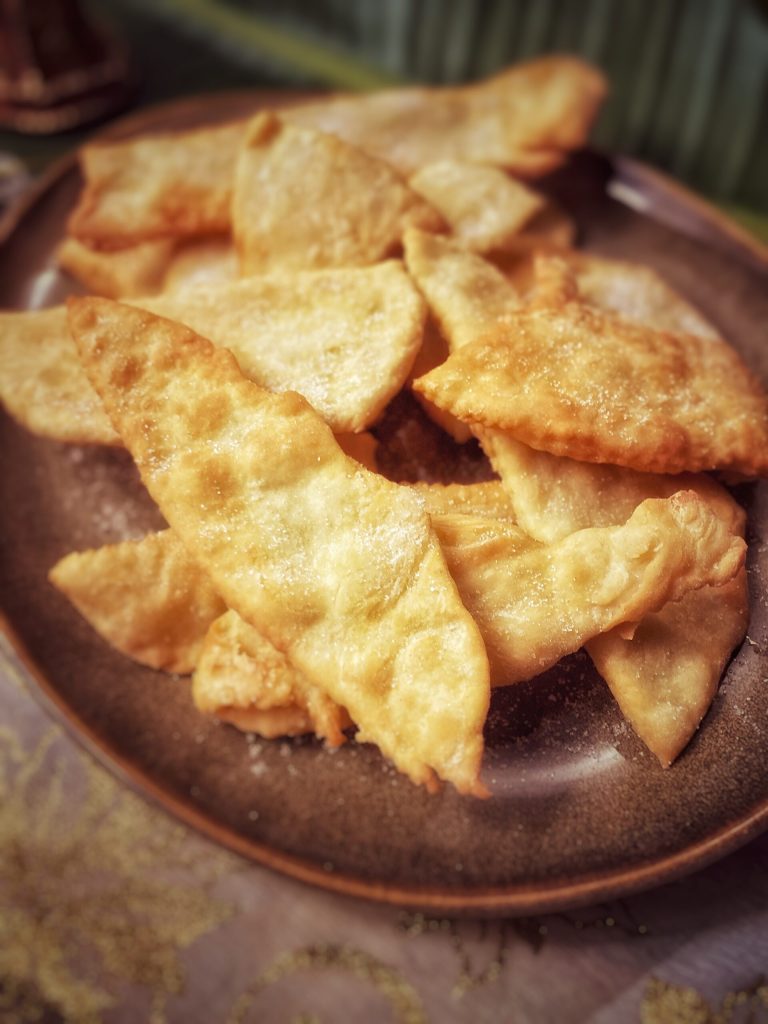A Hojuela (literally “flake”), also called Hojaldra, is a traditional Spanish and Latin American dessert originating from Spain.
In Latin American countries, particularly in Colombia and Spain, it is commonly prepared during Holy Week and the Christmas season.
The ingredients vary by region, but typically consist of a batter made of flour fried in oil and sprinkled with sugar.
In Colombia, Hojuelas are generally eaten together with manjar blanco, natillas and buñuelos.
They are prepared with wheat flour, eggs, and orange juice.
“Miel sobre hojuelas” is a Spanish saying that means making something good even better. The expression originated when people added honey to hojuelas instead of sugar, and they enjoyed the flavor even more.

- Difficulty: Easy
- Cost: Very inexpensive
- Rest time: 1 Hour
- Preparation time: 5 Minutes
- Portions: 4 People
- Cooking methods: Frying
- Cuisine: Central American
- Seasonality: Christmas, Easter
Hojuela Ingredients:
- 1.25 cups flour
- 1 tbsp sugar
- 1 egg
- 1/4 cup orange juice
- 1 tbsp butter
- as needed vegetable oil
- as needed sugar (or honey – for decoration)
Steps
Mix the flour with the butter and sugar, add the egg to the center, and gradually add the orange juice. Knead the dough and let it rest covered for 1 hour.
Roll out the dough, cut into rectangular strips with a pasta cutter, and fry in plenty of hot oil.
Serve with sugar or honey on top.

Fazuelos, a typical Sephardic Jewish dessert, are sometimes also called “hojuelas”: they are thin fried dough pastries.
A type of rolled pastry, whose origins trace back to Spain, with references dating back to the late Spanish Middle Ages.

